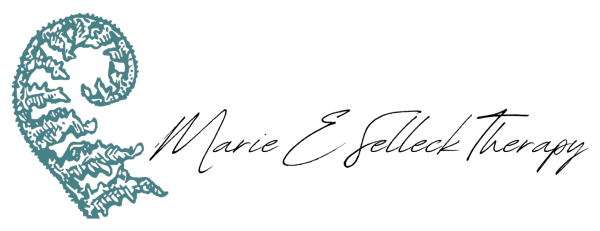The Connection Between Trauma and Substance Abuse: Breaking the Cycle
When bad things happen to us, our brains try to protect us. Sometimes, this protection comes in the form of using drugs or alcohol to feel better. This pattern happens a lot.
How Trauma Changes Us
Trauma isn't just about one big, scary event. Trauma can be many small hurts that pile up over time. When we go through trauma, especially as children, it changes how we see the world and ourselves.
Think about a child who never knows if their parent will be kind or mean. This child learns that people can't be trusted. They learn to be always on guard. As they grow up, this feeling doesn't just go away.
Attachment: The Foundation of Our Relationships
The way we connect with our caregivers when we're young creates patterns called "attachment styles." These patterns affect all our relationships later in life.
When children don't get consistent care and love, they often develop what we call "insecure attachment." This means they struggle with trust, closeness, and managing strong feelings which can cause emotional dysregulation.
What Research Tells Us: The Attachment-Substance Abuse Connection
Research shows that addiction can be viewed as an "attachment disorder," where substances replace healthy human connections (Flores, 2004).
In a major study examining attachment patterns in substance users, nearly 80% of people with substance use disorders showed insecure attachment patterns (Schindler et al., 2005). This is much higher than what we see in the general population.
Another important study found that people with alcohol abuse problems scored significantly higher on measures of insecure attachment and fear of intimacy, than those without alcohol issues (Thorberg & Lyvers, 2010).
Here's why this connection exists:
Self-medication: Research shows that people with attachment wounds often feel intense shame, anxiety, or emptiness. Drugs and alcohol temporarily take away these painful feelings (Khantzian, 2003).
Missing coping skills: Studies found that when we don't learn healthy ways to deal with stress as children, we might turn to substances instead (Magai, 1999).
Difficulty with relationships: Research demonstrates that people with attachment issues often feel alone or misunderstood. Substances can feel like the only reliable "friend" (Padykula & Conklin, 2010).
Shame cycles: Work by researchers shows how using substances often leads to more shame, which leads to more using. This creates a hard-to-break cycle (Wiechelt, 2007).
Multiple clients of mine have described their substance of choice as a reliable friend, and fear about what they would do without this friend. This description reflects what Bowlby (1988), the father of attachment theory, described: we seek comfort wherever we can find it.
People with attachment issues often feel alone or misunderstood. Substances can feel like the only reliable "friend"
-Padykula & Conklin, 2010
Breaking the Cycle: The Path Forward
The good news is that healing is possible. The brain can change and grow at any age—what scientists call "neuroplasticity." Here's how we can break this cycle:
1. Understand the Connection
The first step is seeing how past experiences and trauma are connected to current substance abuse. This isn't about blame—it's about understanding.
2. Build Safety First
Before any deep work can happen, you need to feel safe. This might mean:
Finding a therapist you trust
Creating a social network of supports
Creating stable routines
Learning grounding techniques for when feelings get too big
3. Feel the Feelings
Many people use substances to avoid painful emotions. Learning to sit with feelings—even uncomfortable ones—is key to recovery. Brainspotting is a very helpful therapy to assist with reducing the discomfort.
4. Create New Attachment Experiences
Healing happens in relationships. This might be with a therapist, support group, or healthy friends and family. These new experiences slowly rewrite the old patterns. Research shows that secure attachment can be learned through new relationships (Mikulincer & Shaver, 2018).
5. Address the Shame
Shame tells us we ARE bad, not that we DID something bad. This feeling drives much of addiction. Working through shame is essential for lasting change.
A Note on Compassion
If you struggle with substance use, please know this: You're not weak. You're not broken. Your brain found a way to survive difficult experiences. Now, you can learn new ways to cope and connect.
Recovery isn't about willpower. It's about healing the wounds that drive the behavior. It's about finding connections that fill the spaces substances once occupied.
Moving Forward
The path to healing isn't straight or easy. There will be steps backward along with steps forward. But understanding the connection between your past hurts and current struggles is powerful.
Your attachment wounds can heal. Your relationship with drugs and alcohol change. The cycle of substance abuse can be broken with Substance Abuse Therapy.
As a therapist who has witnessed countless journeys of recovery, I can tell you this with certainty: Where there is understanding, there is hope. And where there is hope, healing follows.
References
Bowlby, J. (1988). A secure base: Parent-child attachment and healthy human development. Basic Books.
Flores, P. J. (2004). Addiction as an attachment disorder. Jason Aronson.
Khantzian, E. J. (2003). The self-medication hypothesis revisited: The dually diagnosed patient. Primary Psychiatry, 10(9), 47-54.
Mikulincer, M., & Shaver, P. R. (2018). Attachment theory as a framework for understanding relationship functioning and change. In O. Gillath, G. Adams, & A. Kunkel (Eds.), Relationship science: Integrating evolutionary, neuroscience, and sociocultural approaches (pp. 109-130). American Psychological Association.
Padykula, N. L., & Conklin, P. (2010). The self regulation model of attachment trauma and addiction. Clinical Social Work Journal, 38(4), 351-360.
Schindler, A., Thomasius, R., Sack, P. M., Gemeinhardt, B., Küstner, U., & Eckert, J. (2005). Attachment and substance use disorders: A review of the literature and a study in drug dependent adolescents. Attachment & Human Development, 7(3), 207-228.
Thorberg, F. A., & Lyvers, M. (2010). Attachment, fear of intimacy and differentiation of self among clients in substance disorder treatment facilities. Addictive Behaviors, 35(2), 190-196.


